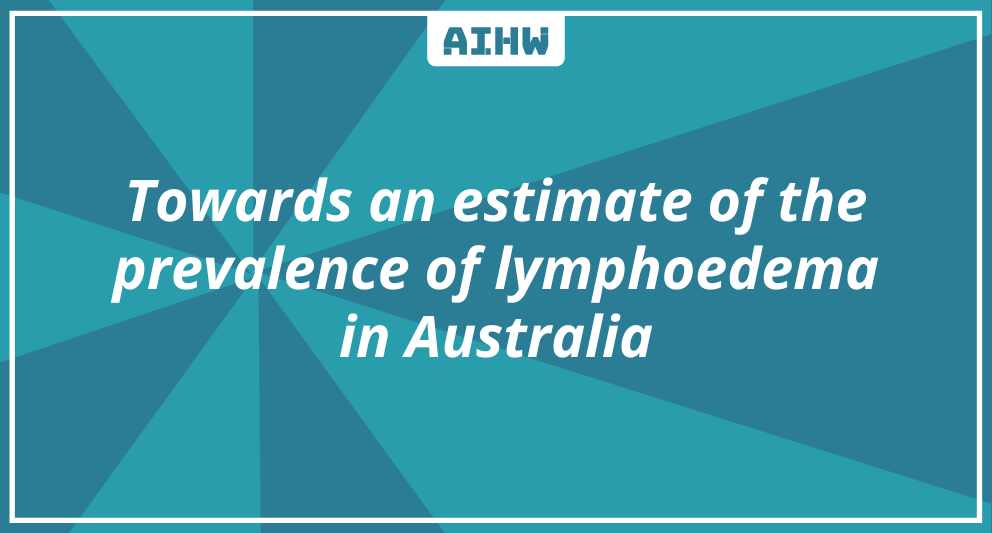Towards an estimate of the prevalence of lymphoedema in Australia
 As the title suggests, AIHW’s latest report, Towards an estimate of the prevalence of lymphoedema in Australia, aims to evaluate the effectiveness of available data sources in determining the number of Australian’s living with lymphoedema.
As the title suggests, AIHW’s latest report, Towards an estimate of the prevalence of lymphoedema in Australia, aims to evaluate the effectiveness of available data sources in determining the number of Australian’s living with lymphoedema.
The report explores a range of data sources and assesses whether they contain information on people with lymphoedema including information on the presence of risk factors, treatment and management, and the individual and population impact of lymphoedema.
Lymphoedema is a chronic condition where excessive amounts of protein-rich fluid in the tissue accumulates, resulting in a permanent swelling of one or more parts of the body. This is caused by a mechanical failure of the lymphatic system where the need for lymphatic drainage exceeds the capacity of the lymphatic circulation. It can also occur when lymphatic vessels or nodes have been damaged.
Diagnosis of lymphoedema is difficult, and misdiagnosis is common. A lack of understanding and awareness of the condition and its presentation is common among medical practitioners, leading to an under-diagnosis of the condition.
Symptoms include frequent pain and discomfort which has a negative impact on the patient’s quality of life. People living with lymphoedema also have increased susceptibility to acute cellulitis infections, requiring hospitalisation and antibiotic therapy.
Treatment for lymphoedema mainly occurs in the primary and community health care settings and includes compression therapy, skin care, exercise, and massage therapy which is critical in preventing progression of the condition as there is currently no known cure. There were, however, 9,370 hospitalisations associated with lymphoedema in 2020–21 (30.3 per 100,000 population). The rate was higher for females (6,499; 39.9 per 100,000 population) compared with males (2,871; 19.7 per 100,000 population).
In mid-2020, the Minister for Health at the time announced that funding from the Australian Government would allow Australians diagnosed with lymphoedema to have greater access to compressions garments under existing state and territory schemes.
Posted under Health.


